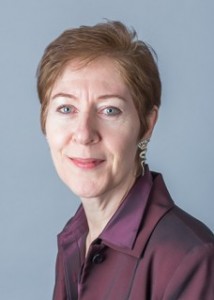A Message from Dean Barrett
In College: What it Was, Is, and Should Be, Andrew Delbanco recalls talking to a group of alumni from Columbia University. After lauding the curriculum’s effectiveness in developing engaged and educated citizens, Delbanco recalls an elderly alumnus gently chastising him by noting that Delbanco had “’missed the main point.’” The main point, it turned out, was that college education teaches one “’how to enjoy life.’” As Delbanco explains it, “college had opened his senses as well as his mind to experiences that would otherwise be foreclosed to him.”

Learning how to enjoy life occurs in the classroom and on the quad, listening to guest lectures and participating in teaching circles, studying abroad and broadening your mind in the Hudson Valley, viewing art and creating films, in research with faculty and while interning and volunteering, as the faculty, alumni, and students profiled in this newsletter demonstrate. During my first year here, I have thoroughly enjoyed guest lecturers, faculty and student presentations, and conferences investigating some of the most important issues of our time, including climate change, income inequality, gender and economics, and racism in America. This year has already gotten off to a great start with two interdisciplinary conferences: Translating Memory and Remembrance Across the Disciplines and Here & There: Guatamalan Diaspora Through Activism & Art.
Last week, I was thrilled to introduce our newest contribution to the mind-opening aspects of college to which Delbanco refers — the inaugural event of Without Limits: Interdisciplinary Conversations in the Liberal Arts, a year-long series of events organized around an annual theme. The panel “The Liberal Arts and the Digital World,” part of this year’s theme, “Screens and Scenes,” raised questions about the ethics of filmmaking, the fate of reading in the distracting territory of the web, the ramifications of early screen use by children, and the effect of stylistic decisions in digital texts. Since much of what I would have written was delivered as opening remarks, let me share them here with you.
“The Liberal Arts and the Digital World” Opening Remarks
10/28/15
The liberal arts have been the foundation of higher education for centuries, and they have been at the heart of higher education in the United States since its inception. And, yet, for many years, they have seemed invisible or peripheral as other disciplines – deemed more practical and lucrative — have gained momentum and media attention. So, the past few decades have bred a plethora of responses to a perceived crisis in liberal arts; Delbanco’s College: What is Was, Is, and Should Be and Michael Roth’s Beyond the University: Why Liberal Education Matters are just two recent examples. The New York Times regularly offers columns devoted to the subject. The American Association of Colleges and Universities has launched surveys of employers and graduates who confirm the importance of degrees in the liberal arts. We know that students who major in the humanities and social sciences possess skills valued by employers, but, more importantly, we know the intellectual, cultural, and ethical impoverishment of a world without the kind of careful critical analysis developed in philosophy and literature, the investigation of historical trends and unveiling of biases, assumptions, and preconceptions afforded in Black Studies, anthropology, sociology, history, and Women’s, Gender and Sexuality Studies, the exploration of different modes of seeing and expression undertaken in psychology, communications, digital media, journalism, and communication disorders, the understanding of our world in a global context fostered in the study of languages, political science, Asian Studies, and Latin American and Caribbean Studies, and the examination of humans in relation to the world’s limited resources cultivated in economics and geography.
However do we bridge the vast array of programs and departments – 17 departments, 20 undergraduate majors, 30 minors, six graduate programs – that fall under the umbrella of the College of Liberal Arts and Sciences? How do we demonstrate our relevance to parents and policy makers, community members and campus neighbors? This lecture series is one of the ways that we hope to address those questions. While I know there are many faculty, staff, and students who contributed to the realization of this series, I need to give particular thanks to the co-chairs of this series, Dr. Ken Nystrom, Associate Professor and Chair of Anthropology, and Dr Cyrus Mulready, Associate Professor of English and Provost Fellow. I am astounded that they have pulled together all the threads of this intricate tapestry in such a short period of time. I am, as always, very grateful for Despina Parker’s assistance in marketing and organizing the series. My thanks go to everyone who is participating in this year’s event, including today’s speakers — Professor Wendy Bower, Dr. Lauren Meeker, Dr. Tom Olsen, and a very courageous student, Ms. Megan Doty.
Without Limits is designed to highlight connections among disciplines, to explore themes through the multiple lenses of the humanities and social sciences, to enhance connections between our work and the world in order to make more visible the contributions of the liberal arts to SUNY New Paltz and to our community. We don’t always think of our work in terms of social impacts and “application,” but the application of our research, teaching, and studying is nothing short of what it means to be human — in our minds, our homes, our art and artefacts, our society, and our world. I can’t imagine a more far-reaching application. Last night, at a teaching circle on Ta-Nehisi Coates’ Between the World and Me, I was struck by a comment from a student. She had amassed statistics and evidence aplenty in her classes and readings about social injustice and racism, but she observed that Coates’ letter to his son was compelling in a way that numbers often aren’t. I hope that this series will encourage us to consider our scholarship, our teaching, our way of seeing the world in light of larger implications and help us recognize the enduring value of numbers and narratives.
